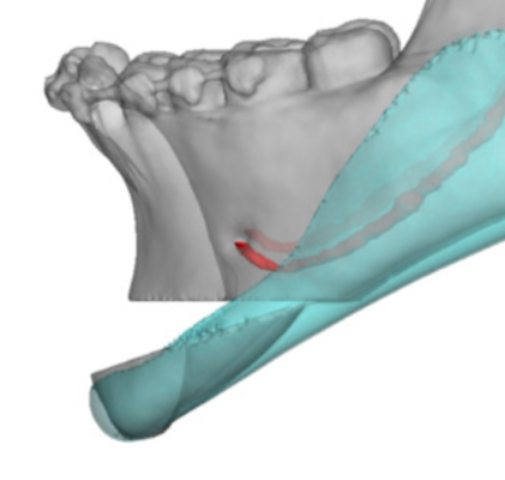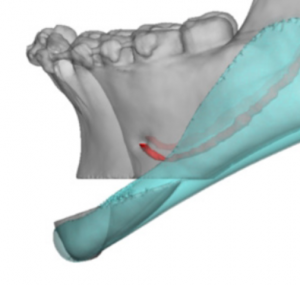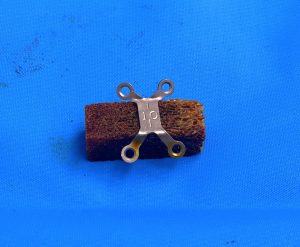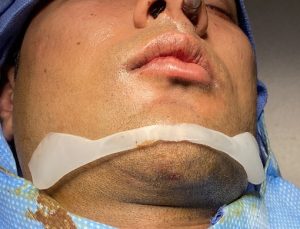Background: Jawline augmentation with standard implants employs ‘spot’ augmentation at its corners. (chin and jaw angles) Custom implant augmentation, however, covers the entire jawline and, as a result, has a more profound and complete effect on the lower third of the face. Because of its circumferential coverage it provides a true three dimensional change to the jawline.
In considering the design of a custom jawline implant there are seven (7) specific dimensions that need to be considered. There is the horizontal, vertical and width dimensions of the chin and jaw angles as well as how they connect between them. While there are certain restrictions that apply to each of these dimensions when it comes to implant augmentation, the most significant is that of the vertical dimension of the chin.
The naturally tight soft tissue chin pad that wraps around the chin prominence has limitations of stretch that must be considered when using an implant. In my experience the combined horizontal and vertical dimensions of the planned implant augmentation can not exceed the number 12 in most cases. (in some cases that may be increased to 15) But without question when the vertical chin lengthening need is 10mms or more, with almost any amount of horizontal increase, an implant will be problematic and ill-advised. In these cases a vertical lengthening bony genioplasty needs to be done to safely achieve this dimensional change. The only question then is whether it should be done first, followed secondarily by the placement of a custom jawline implant or done at the same time.
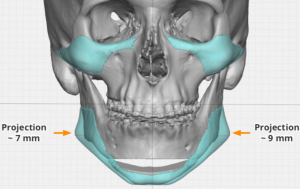

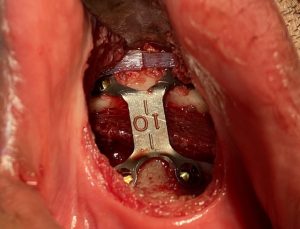
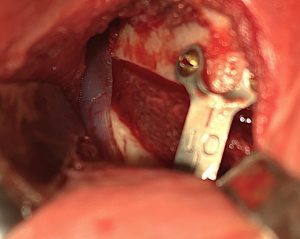
Case Highlights:
1) When it comes to the tissue expansion capability by implants of the jawline the sot tissue chin pad is the greatest limiting area.
2) When significant vertical lengthening of the chin is needed in total jaw augmentation, combining a lengthening bony genioplasty with a custom jawline implant overlay is the best approach.
3) Getting the custom jawline implant around the sliding genioplasty may require a split implant placement technique.
Dr. Barry Eppley
Indianapolis, Indiana

